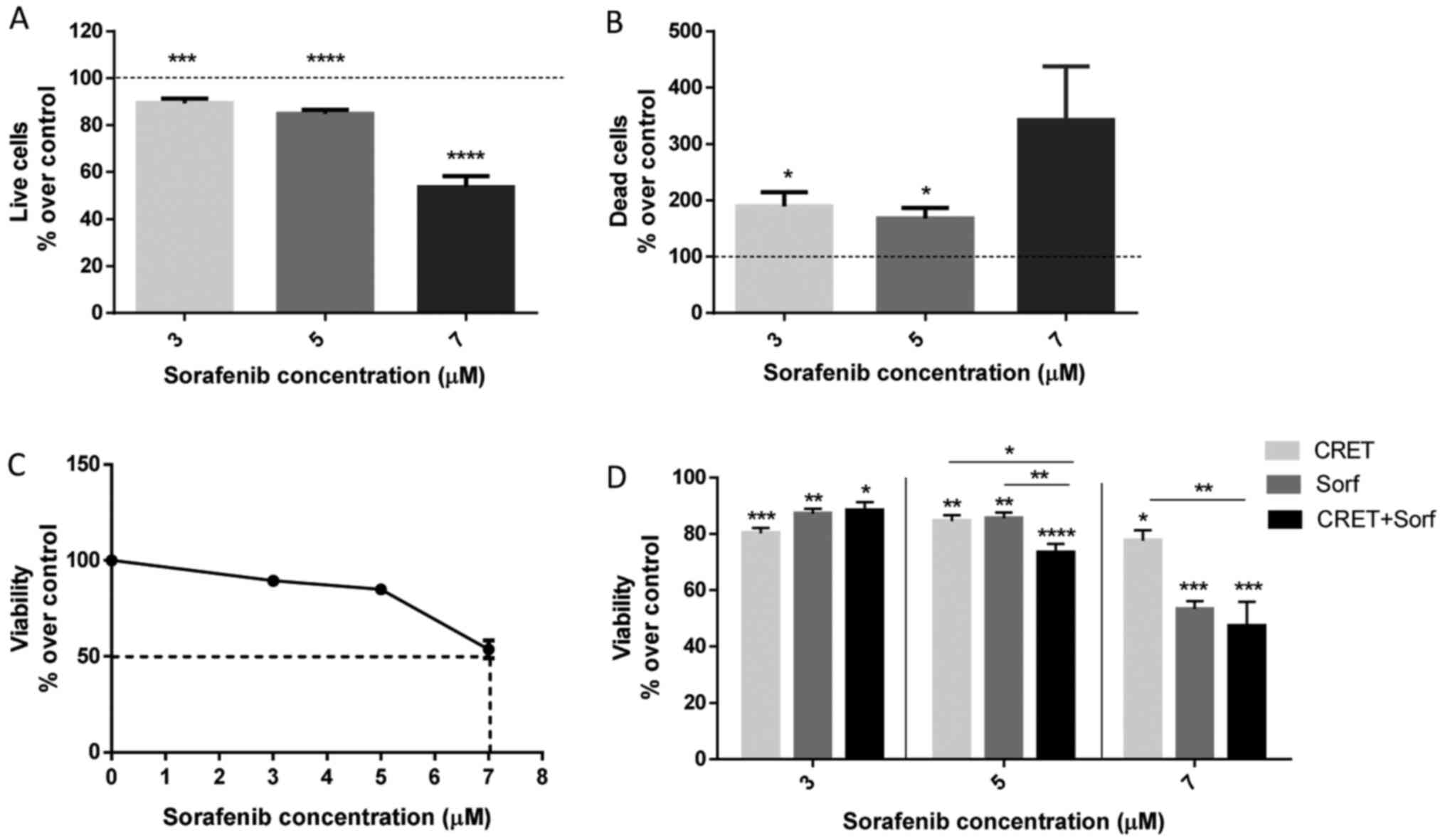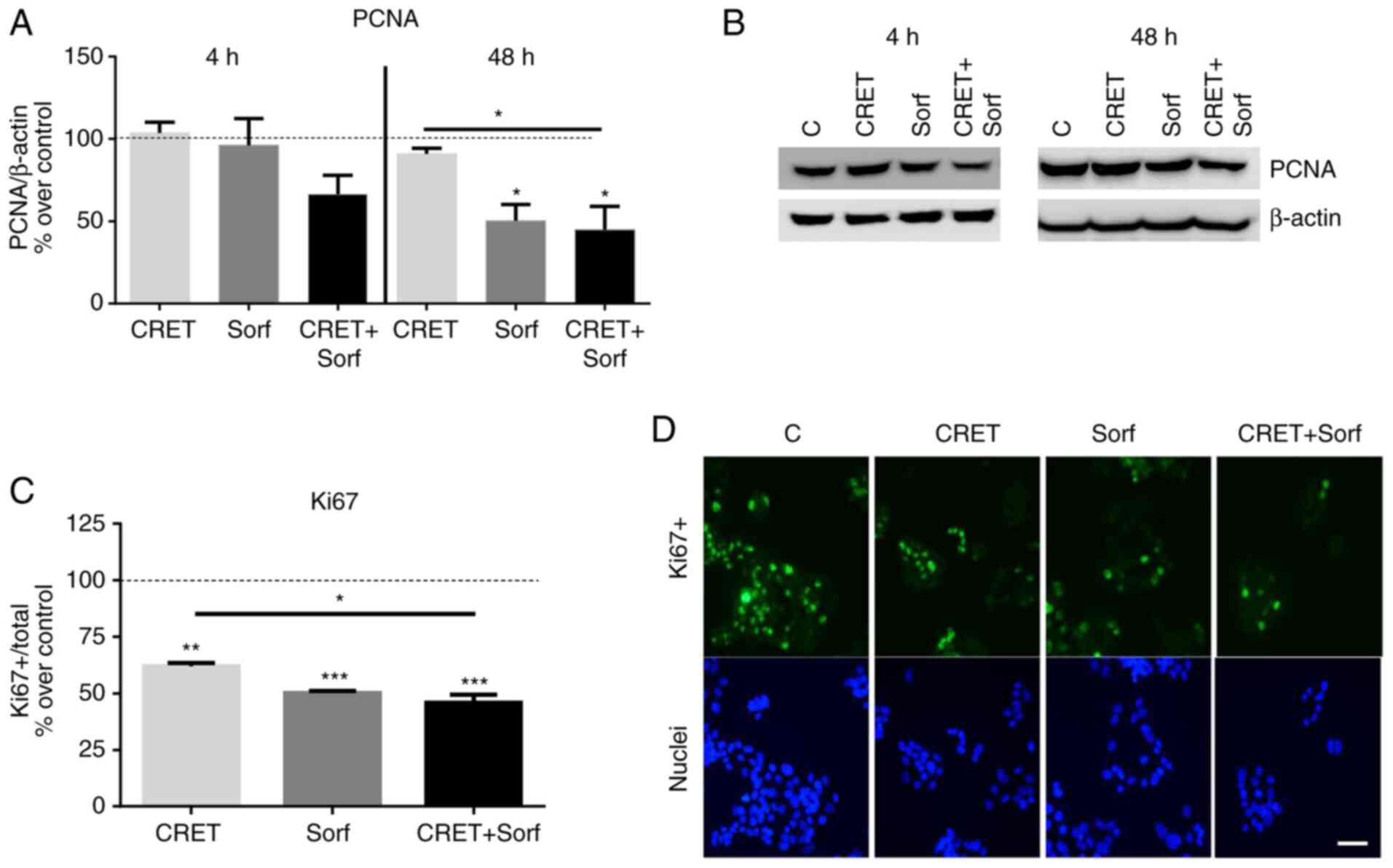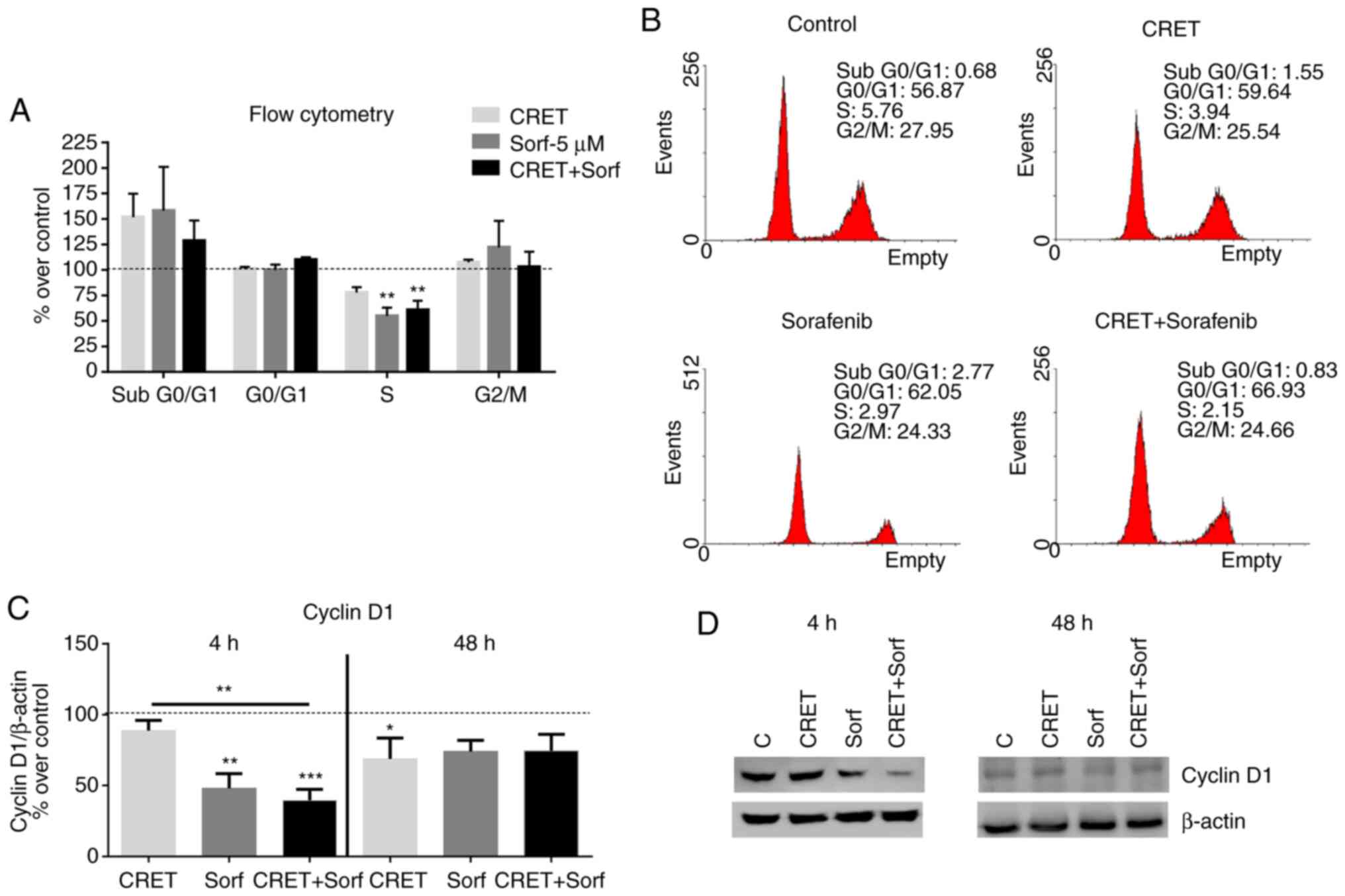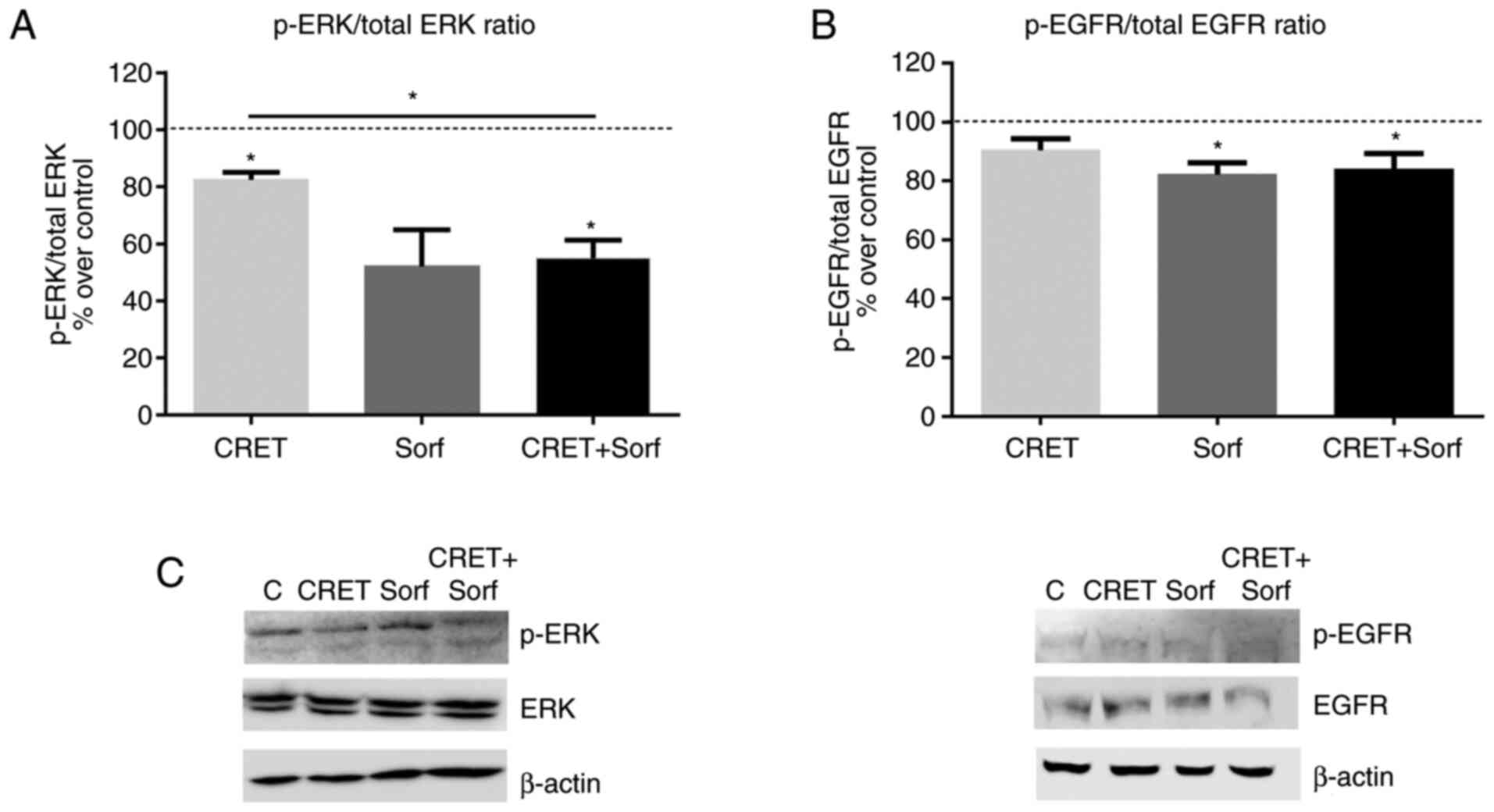|
1
|
Hernández-Bule ML, Trillo MA, Cid MA, Leal
J and Ubeda A: In vitro exposure to 0.57-MHz electric currents
exerts cytostatic effects in HepG2 human hepatocarcinoma cells. Int
J Oncol. 30:583–592. 2007.PubMed/NCBI
|
|
2
|
Naranjo P, Lopez-Estebaranz J, Shoaib T
and Pinto H: Non-ablative capacitive resistive 448 kHz
radiofrequency for wrinkle reduction pilot study. Aesthetic Med.
6:41–48. 2020.
|
|
3
|
Yokota Y, Tashiro Y and Suzuki Y: Effect
of capacitive and resistive electric transfer on tissue
temperature, muscle flexibility, and blood circulation. J Nov
Physiother. 7:325–331. 2017. View Article : Google Scholar
|
|
4
|
Coccetta CA, Sale P, Ferrara PE, Specchia
A, Maccauro G, Ferriero G and Ronconi G: Effects of capacitive and
resistive electric transfer therapy in patients with knee
osteoarthritis: A randomized controlled trial. Int J Rehabil Res.
42:106–111. 2019. View Article : Google Scholar : PubMed/NCBI
|
|
5
|
Pavone C, Romeo S, D'Amato F, Usala M,
Letizia Mauro G and Caruana G: Does transfer capacitive resistive
energy has a therapeutic effect on Peyronie's disease? Randomized,
single-blind, sham-controlled study on 96 patients: Fast Pain
Relief. Urol Int. 99:77–83. 2017. View Article : Google Scholar : PubMed/NCBI
|
|
6
|
Bito T, Tashiro Y, Suzuki Y, Kajiwara Y,
Zeidan H, Kawagoe M, Sonoda T, Nakayama Y, Yokota Y, Shimoura K, et
al: Acute effects of capacitive and resistive electric transfer
(CRet) on the Achilles tendon. Electromagn Biol Med. 38:48–54.
2019. View Article : Google Scholar : PubMed/NCBI
|
|
7
|
Fousekis K, Chrysanthopoulos G, Tsekoura
M, Mandalidis D, Mylonas K, Angelopoulos P, Koumoundourou D, Billis
V and Tsepis E: Posterior thigh thermal skin adaptations to
radiofrequency treatment at 448 kHz applied with or without
Indiba® fascia treatment tools. J Phys Ther Sci.
32:292–296. 2020. View Article : Google Scholar : PubMed/NCBI
|
|
8
|
Hernández-Bule ML, Paíno CL, Trillo MÁ and
Úbeda A: Electric stimulation at 448 kHz promotes proliferation of
human mesenchymal stem cells. Cell Physiol Biochem. 34:1741–1755.
2014. View Article : Google Scholar : PubMed/NCBI
|
|
9
|
Hernandez Bule ML, Angeles Trillo M,
Martinez Garcia MA, Abilahoud C and Ubeda A: Chondrogenic
differentiation of adipose-derived stem cells by radiofrequency
Electric stimulation. J Stem Cell Res Ther. 7:72017. View Article : Google Scholar
|
|
10
|
Hernández-Bule ML, Martínez-Botas J,
Trillo MÁ, Paíno CL and Úbeda A: Antiadipogenic effects of
subthermal electric stimulation at 448 kHz on differentiating human
mesenchymal stem cells. Mol Med Rep. 13:3895–3903. 2016. View Article : Google Scholar : PubMed/NCBI
|
|
11
|
Hernández-Bule ML, Medel E, Colastra C,
Roldán R and Úbeda A: Response of neuroblastoma cells to RF
currents as a function of the signal frequency. BMC Cancer.
19:8892019. View Article : Google Scholar : PubMed/NCBI
|
|
12
|
Trillo MÁ, Martínez MA and Úbeda A:
Effects of the signal modulation on the response of human
fibroblasts to in vitro stimulation with subthermal RF currents.
Electromagn Biol Med. 40:201–209. 2021. View Article : Google Scholar : PubMed/NCBI
|
|
13
|
Hernández-Bule ML, Roldán E, Matilla J,
Trillo MA and Ubeda A: Radiofrequency currents exert cytotoxic
effects in NB69 human neuroblastoma cells but not in peripheral
blood mononuclear cells. Int J Oncol. 41:1251–1259. 2012.PubMed/NCBI
|
|
14
|
Kato S, Saitoh Y and Miwa N: Repressive
effects of a capacitive-resistive electric transfer (CRet)
hyperthermic apparatus combined with provitamin C on intracellular
lipid-droplets formation in adipocytes. Int J Hyperthermia.
29:30–37. 2013. View Article : Google Scholar : PubMed/NCBI
|
|
15
|
Saitoh Y, Yoshimoto T, Kato S and Miwa N:
Synergic carcinostatic effects of ascorbic acid and hyperthermia on
Ehrlich ascites tumor cell. Exp Oncol. 37:94–99. 2015. View Article : Google Scholar : PubMed/NCBI
|
|
16
|
Méndez-Sánchez N, Vásquez-Fernández F,
Zamora-Valdés D and Uribe M: Sorafenib, a systemic therapy for
hepatocellular carcinoma. Ann Hepatol. 7:46–51. 2008. View Article : Google Scholar : PubMed/NCBI
|
|
17
|
Liu L, Cao Y, Chen C, Zhang X, McNabola A,
Wilkie D, Wilhelm S, Lynch M and Carter C: Sorafenib blocks the
RAF/MEK/ERK pathway, inhibits tumor angiogenesis, and induces tumor
cell apoptosis in hepatocellular carcinoma model PLC/PRF/5. Cancer
Res. 66:11851–11858. 2006. View Article : Google Scholar : PubMed/NCBI
|
|
18
|
Ge S and Huang D: Systemic therapies for
hepatocellular carcinoma. Drug Discov Ther. 9:352–362. 2015.
View Article : Google Scholar : PubMed/NCBI
|
|
19
|
Llovet JM, Ricci S, Mazzaferro V, Hilgard
P, Gane E, Blanc JF, de Oliveira AC, Santoro A, Raoul JL, Forner A,
et al SHARP Investigators Study Group, : Sorafenib in advanced
hepatocellular carcinoma. N Engl J Med. 359:378–390. 2008.
View Article : Google Scholar : PubMed/NCBI
|
|
20
|
Wilhelm SM, Carter C, Tang L, Wilkie D,
McNabola A, Rong H, Chen C, Zhang X, Vincent P, McHugh M, et al:
BAY 43-9006 exhibits broad spectrum oral antitumor activity and
targets the RAF/MEK/ERK pathway and receptor tyrosine kinases
involved in tumor progression and angiogenesis. Cancer Res.
64:7099–7109. 2004. View Article : Google Scholar : PubMed/NCBI
|
|
21
|
Hernández-Bule ML, Trillo MÁ and Úbeda A:
Molecular mechanisms underlying antiproliferative and
differentiating responses of hepatocarcinoma cells to subthermal
electric stimulation. PLoS One. 9:e846362014. View Article : Google Scholar : PubMed/NCBI
|
|
22
|
Omar HA, Tolba MF, Hung JH and Al-Tel TH:
OSU-2S/Sorafenib synergistic antitumor combination against
hepatocellular carcinoma: The Role of PKCδ/p53. Front Pharmacol.
7:4632016. View Article : Google Scholar : PubMed/NCBI
|
|
23
|
Zhang SS, Ni YH, Zhao CR, Qiao Z, Yu HX,
Wang LY, Sun JY, Du C, Zhang JH, Dong LY, et al: Capsaicin enhances
the antitumor activity of sorafenib in hepatocellular carcinoma
cells and mouse xenograft tumors through increased ERK signaling.
Acta Pharmacol Sin. 39:438–448. 2018. View Article : Google Scholar : PubMed/NCBI
|
|
24
|
Nowak E, Kammerer S and Küpper JH:
ATP-based cell viability assay is superior to trypan blue exclusion
and XTT assay in measuring cytotoxicity of anticancer drugs Taxol
and Imatinib, and proteasome inhibitor MG-132 on human hepatoma
cell line HepG2. Clin Hemorheol Microcirc. 69:327–336. 2018.
View Article : Google Scholar : PubMed/NCBI
|
|
25
|
Marisi G, Cucchetti A, Ulivi P, Canale M,
Cabibbo G, Solaini L, Foschi FG, De Matteis S, Ercolani G,
Valgiusti M, et al: Ten years of sorafenib in hepatocellular
carcinoma: Are there any predictive and/or prognostic markers?
World J Gastroenterol. 24:4152–4163. 2018. View Article : Google Scholar : PubMed/NCBI
|
|
26
|
Hernández-Bule ML, Cid MA, Trillo MA, Leal
J and Ubeda A: Cytostatic response of HepG2 to 0.57 MHz electric
currents mediated by changes in cell cycle control proteins. Int J
Oncol. 37:1399–1405. 2010.PubMed/NCBI
|
|
27
|
Chai H, Luo AZ, Weerasinghe P and Brown
RE: Sorafenib downregulates ERK/Akt and STAT3 survival pathways and
induces apoptosis in a human neuroblastoma cell line. Int J Clin
Exp Pathol. 3:408–415. 2010.PubMed/NCBI
|
|
28
|
Yang Y, Qin S-K, Wu Q, Wang ZS, Zheng RS,
Tong XH, Liu H, Tao L and He XD: Connexin-dependent gap junction
enhancement is involved in the synergistic effect of sorafenib and
all-trans retinoic acid on HCC growth inhibition. Oncol Rep.
31:540–550. 2014. View Article : Google Scholar : PubMed/NCBI
|
|
29
|
Tiniakos DG and Brunt EM: Proliferating
cell nuclear antigen and Ki-67 labeling in hepatocellular nodules:
A comparative study. Liver. 19:58–68. 1999. View Article : Google Scholar : PubMed/NCBI
|
|
30
|
Ma S, Yang J, Li J and Song J: The
clinical utility of the proliferating cell nuclear antigen
expression in patients with hepatocellular carcinoma. Tumour Biol.
37:7405–7412. 2016. View Article : Google Scholar : PubMed/NCBI
|
|
31
|
Boehm EM, Gildenberg MS and Washington MT:
The many roles of PCNA in eukaryotic DNA replication. Enzymes.
39:231–254. 2016. View Article : Google Scholar : PubMed/NCBI
|
|
32
|
Burkhart RA, Ronnekleiv-Kelly SM and
Pawlik TM: Personalized therapy in hepatocellular carcinoma:
Molecular markers of prognosis and therapeutic response. Surg
Oncol. 26:138–145. 2017. View Article : Google Scholar : PubMed/NCBI
|
|
33
|
Sun X and Kaufman PD: Ki-67: More than a
proliferation marker. Chromosoma. 127:175–186. 2018. View Article : Google Scholar : PubMed/NCBI
|
|
34
|
Duval AP, Troquier L, de Souza Silva O,
Demartines N and Dormond O: Diclofenac potentiates sorafenib-based
treatments of hepatocellular carcinoma by enhancing oxidative
stress. Cancers (Basel). 11:112019. View Article : Google Scholar : PubMed/NCBI
|
|
35
|
Dhillon AS, Hagan S, Rath O and Kolch W:
MAP kinase signalling pathways in cancer. Oncogene. 26:3279–3290.
2007. View Article : Google Scholar : PubMed/NCBI
|
|
36
|
Ji L, Lin Z, Wan Z, Xia S, Jiang S, Cen D,
Cai L, Xu J and Cai X: miR-486-3p mediates hepatocellular carcinoma
sorafenib resistance by targeting FGFR4 and EGFR. Cell Death Dis.
11:2502020. View Article : Google Scholar : PubMed/NCBI
|
|
37
|
Lei X-F, Ke Y, Bao T-H, Tang HR, Wu XS,
Shi ZT, Lin J, Zhang ZX, Gu H and Wang L: Effect and safety of
sorafenib in patients with intermediate hepatocellular carcinoma
who received transarterial chemoembolization: A retrospective
comparative study. World J Clin Cases. 6:74–83. 2018. View Article : Google Scholar : PubMed/NCBI
|
|
38
|
Falzone L, Salomone S and Libra M:
Evolution of cancer pharmacological treatments at the turn of the
third millennium. Front Pharmacol. 9:13002018. View Article : Google Scholar : PubMed/NCBI
|
|
39
|
Giladi M, Weinberg U, Schneiderman RS,
Porat Y, Munster M, Voloshin T, Blatt R, Cahal S, Itzhaki A, Onn A,
et al: Alternating electric fields (tumor-treating fields therapy)
can improve chemotherapy treatment efficacy in non-small cell lung
cancer both in vitro and in vivo. Semin Oncol. 41 (Suppl
6):S35–S41. 2014. View Article : Google Scholar : PubMed/NCBI
|
|
40
|
Yang W-H, Xie J, Lai Z-Y, Yang MD, Zhang
GH, Li Y, Mu JB and Xu J: Radiofrequency deep hyperthermia combined
with chemotherapy in the treatment of advanced non-small cell lung
cancer. Chin Med J (Engl). 132:922–927. 2019. View Article : Google Scholar : PubMed/NCBI
|
|
41
|
Wust P, Stein U and Ghadjar P: Non-thermal
membrane effects of electromagnetic fields and therapeutic
applications in oncology. Int J Hyperthermia. 38:715–731. 2021.
View Article : Google Scholar : PubMed/NCBI
|


















